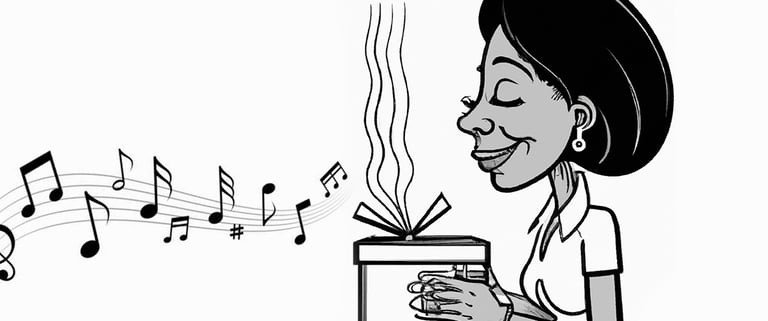Maximising Brand Growth through the 5 Senses
How can you build your brand and engage your audience’s senses?
Maximising Brand Growth through the 5 senses
When building a brand, we are trying to influence an audience’s gut feeling about your brand. To do this, we engage the people’s senses before, during, and after the sale with a cohesive representation of the brand.
An overwhelming number of brand-building efforts are focused on the interaction of brands with the visual sense. It has become so synonymous with branding that saying “we are doing branding” generally means we are getting a logo, color, and fonts.
It may be because human beings are generally visual creatures. William G. Allyn, Professor of Medical Optics, points out, "More than 50% of the cortex, the surface of the brain, is devoted to processing visual information.”
Coupled with the fact that most brands are not built exclusively for the 3.5% of the world that has a visual impairment (0.5% are blind and 3.0% have MSVI), or the 4.5% that is colorblind, it does make sense to be intentional and elaborate with the visual identity of the brand.
However, for a brand identity to make a lasting impact on the audience, we need to have a cohesive look and feel of the brand. The sensory elements, after all, can be used in branding to create memorable experiences that connect with customers on a deeper level.
Sight
Visual branding is the most common one - and a key one at that. This has been made more critical given that most brands are now discovered on screens - they are seen first. Use color, images, shapes, icons, and typography to differentiate yourself and represent your brand principles and personality. Apply these on your digital and print touchpoints. Those building personal brands, look good! Buy some fitting clothes and wear good accessories.
Fun Fact: When the Institute for Color Research ran a study called “Impact of Color on Marketing”, researchers found that up to 90% of snap judgments made on products can be based on color alone, depending on the product.
Smell
Olfactory Branding can evoke memories and emotions. By adding scent to its stores, Nike managed to increase the intent to purchase by 80%. As a personal brand, get yourself a good perfume. As a business, how does your space smell? What of your packaging - does it reek of the sweat and tears you put into it?
Hearing
Audio Branding applies to the sounds and music you use on your reels, long-form videos, and even physical location. They reinforce brand recognition. Walking into a coffee shop playing jazz music at low levels makes you relaxed and you linger. It is not offensive. If anything, it serves as aural wallpaper.
Before I forget, it applies to your brand name too! What your name is and what it sounds like have a huge impact on your audience’s feelings about you.
Touch
Tactile Branding can be used on the packaging, product texture, and even simpler products such as business cards. You get a certain feeling when you touch the packaging of the biggest brand of 2022 - Apple (with a brand value of 482.2 billion dollars, Interbrand). The rigid boxes make you feel how safe and secure the product is. The embossed images make you ‘touch’ the product before you have it. The matte finish makes it luxurious. The precision of Apple’s pulp inlays (holding the products) is a work of art. This creates a whole buying and unboxing experience.
Taste
This is a weird one to explore. We are extremely cautious about what we put into our mouths. We don’t want germs or poisons. However, food brands have learned to compete on taste by offering free samples and promotional items. You will see them in malls and supermarkets letting you taste their unique range of products.
Pepsi gained market share in the 1970s and, in the early 1980s, did an aggressive campaign called the “Pepsi Challenge”. They showed that in blind taste tests, 57% of dedicated Coke Drinkers preferred the taste of Pepsi. Coca-Cola executives, shocked, did internal taste tests and were even more dismayed to see that, even internally, people preferred the taste of Pepsi.
Verdict: Coca-Cola was too harsh.
Coca-Cola developed the ‘New Coke’, which was lighter and sweeter to compete with Pepsi. Even though it was favored during blind taste tests, it failed miserably in the market. After much uproar, Coca-Cola returned their ‘harsh’ Classic Coke and stopped selling New Coke. That was something they were known for - the harshness and bite of Coke. They went back to it and stuck to it. And went on to grow. No wonder their brand value, as a company, was placed at 57.5 billion dollars in 2022.
Find out how you can differentiate by engaging 2 senses - or more - showing who you are as a brand and what you stand for. This will make your brand more recognizable and memorable. Create a unique sensory experience and be remembered for years to come.


We simplify brand building for those starting, growing, or changing direction.
You will receive all our thinking straight to your email.
